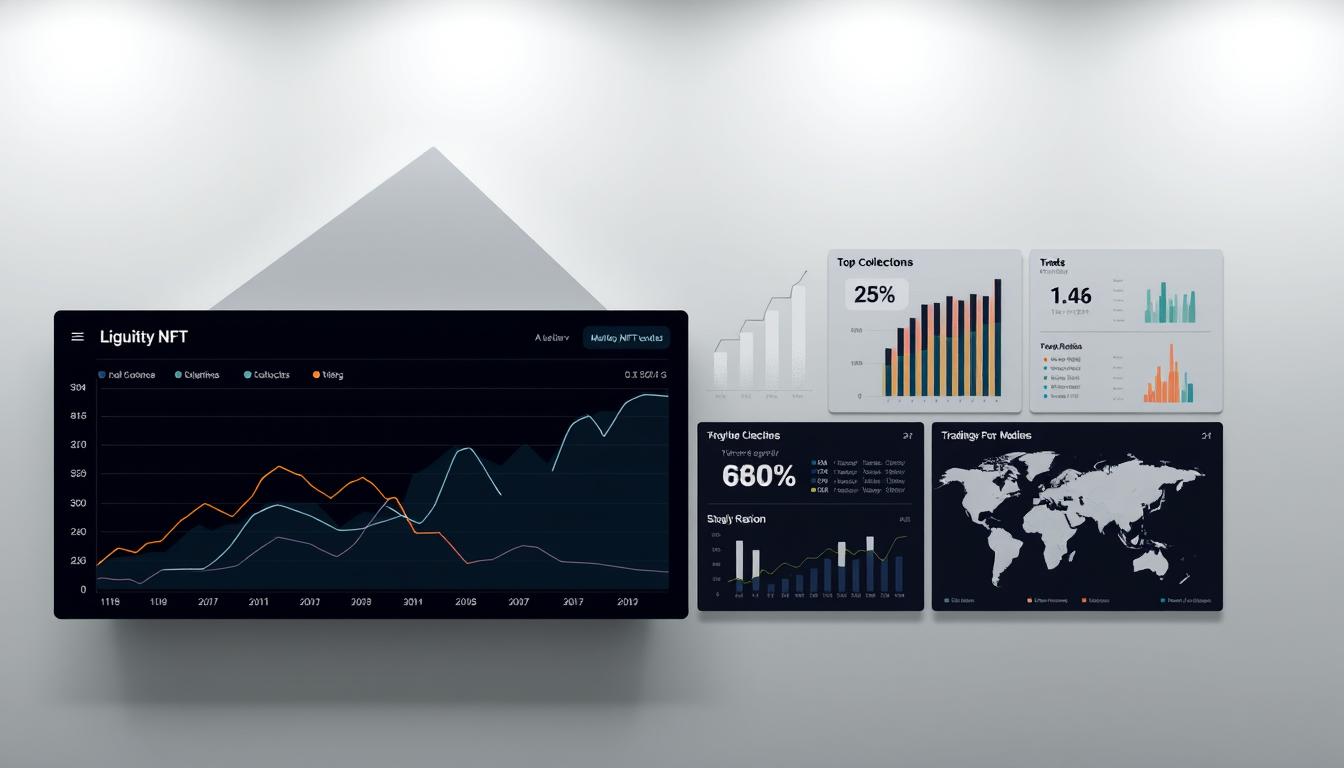Now Reading: Machine Learning Cryptocurrency Risk Assessment Guide
- 01
Machine Learning Cryptocurrency Risk Assessment Guide
Machine Learning Cryptocurrency Risk Assessment Guide

The financial landscape has transformed dramatically since Bitcoin’s arrival. Digital currencies have created a new world of opportunity. They have also introduced significant challenges for investors and professionals.
This market is known for its extreme price swings. Exchange collapses and cyber threats add to the complexity. Traditional methods for evaluating potential downsides often fall short in this fast-paced environment.
This guide explores how advanced computational techniques are changing the game. We will show you how these tools help analyze the volatile nature of digital asset trading. The goal is to provide a clearer picture for making informed decisions.
Our journey will cover why innovative approaches are now essential. We will compare new strategies with older ones across several detailed sections. This foundation is vital for anyone involved in this dynamic space.
Key Takeaways
- Digital currencies present unique challenges that require modern analysis methods.
- Traditional evaluation techniques are often inadequate for today’s fast-moving market.
- Advanced computational tools can process vast amounts of data in real time.
- Understanding these new approaches is crucial for investors and financial professionals.
- This guide provides both theoretical knowledge and practical applications.
- The content is designed for a wide audience, from individual traders to institutional teams.
Understanding Cryptocurrency Risk in the Digital Age
From its origins as an obscure digital experiment, the world of crypto assets has exploded into the mainstream. These digital currencies operate on blockchain technology, a decentralized system free from central bank control. This fundamental difference creates a unique financial risk landscape.
The Rise of Digital Assets
What began with Bitcoin is now a vast ecosystem. Major financial institutions and hedge funds have integrated these assets into their portfolios. The creation of Bitcoin ETFs opened the door for large-scale investments.
Innovations like DeFi (Decentralized Finance) now offer lending and borrowing without traditional banks. Even governments are exploring their own digital currencies, known as CBDCs. This evolution signals a permanent shift in the global financial market.
Key Risk Factors in Crypto Markets
This new market is defined by its extreme volatility. Price swings of 10% or more in a single day are common. Sudden crashes and surges can happen in hours, often driven by social media or regulatory news.
Beyond price swings, investors face several other challenges:
- Liquidity Risk: Trading large amounts can significantly impact an asset’s price.
- Operational Risk: Exchange failures and cybersecurity threats, like the collapse of FTX, are real dangers.
- Regulatory Risk: Laws are still evolving and vary greatly across different countries.
Understanding these fundamental risks is the first step toward developing sound investment strategies for this dynamic environment.
Machine learning cryptocurrency risk assessment – A Comparative Overview
Modern portfolio management in the digital asset space demands sophisticated analytical frameworks that traditional models cannot adequately provide. This section examines how innovative computational approaches compare with conventional evaluation methods.
Comparison with Traditional Risk Assessment
Conventional financial evaluation relies heavily on statistical models like ARIMA and parametric regression. These approaches work well in stable markets with predictable patterns.
However, digital markets exhibit extreme volatility and non-linear behavior. Traditional techniques struggle to capture these complex dynamics effectively.

Evaluating Efficiency and Accuracy
Advanced computational methods demonstrate superior performance in market prediction. Research shows Artificial Neural Networks and Support Vector Machines achieve higher accuracy than traditional models.
During the COVID-19 market turmoil, SVM models significantly outperformed ARIMA approaches. Their ability to adapt to rapidly changing conditions proved particularly valuable.
| Feature | Traditional Methods | Advanced Computational Approaches | Performance Difference |
|---|---|---|---|
| Data Processing Capacity | Limited historical data | Vast datasets including sentiment | Superior pattern recognition |
| Adaptation Speed | Slow parameter adjustment | Real-time learning capability | Faster market response |
| Volatility Handling | Struggles with extreme swings | Excels in turbulent conditions | More reliable predictions |
| Pattern Identification | Linear relationships only | Complex non-linear patterns | Deeper market insights |
These findings establish that while conventional evaluation provides a foundation, modern analytical techniques represent a significant advancement for digital asset markets.
Fundamentals of Machine Learning for Crypto Analysis
At the heart of modern digital asset analysis lies a powerful set of computational tools designed to navigate market complexity. These methods process immense volumes of information to identify patterns that are invisible to traditional approaches.

Understanding these foundational techniques is the first step toward leveraging their predictive power. They transform raw market data into actionable insights.
Core Algorithms and Techniques
Several key algorithms are particularly effective for analyzing digital markets. Support Vector Machines (SVM) create optimal boundaries to classify market conditions. Research shows they often outperform other methods like K-Nearest Neighbor (KNN) in forecasting accuracy.
Ensemble methods combine multiple weaker models to build a stronger, more reliable predictor. Techniques like Random Forest and Ada Boost have demonstrated significant profitability in trading applications.
Artificial Neural Networks (ANNs) mimic biological learning. They excel at finding complex, non-linear relationships within noisy market data, making them highly adaptable.
| Algorithm Type | Primary Function | Key Advantage |
|---|---|---|
| Support Vector Machine (SVM) | Classification & Regression | High accuracy in complex boundary definition |
| Random Forest | Ensemble Learning | Reduces overfitting and improves stability |
| Artificial Neural Networks (ANN) | Pattern Recognition | Excels with non-linear, complex data patterns |
The fundamental strength of these analytical models is their ability to continuously learn. As new market data arrives, they adapt, offering a dynamic approach well-suited for fast-evolving digital assets.
Analyzing Volatility, Regulatory Challenges, and Risk Metrics
Effective portfolio management in digital markets hinges on mastering volatility, regulatory landscapes, and quantitative metrics. These three elements form the foundation for sound investment strategies in this dynamic space.

Price Volatility and Market Dynamics
Digital assets experience extreme price swings that dwarf traditional investments. Bitcoin frequently shows daily movements exceeding 10%, creating unique challenges for investors.
Market crashes can occur within hours due to cascading liquidations. Margin calls trigger automatic selling, creating feedback loops that amplify declines. External factors like social media sentiment and regulatory news drive these rapid changes.
Regulatory Uncertainty and Its Implications
Global regulatory approaches vary dramatically, creating uncertainty. The U.S. SEC classifies some digital assets as securities, leading to legal actions. China maintains comprehensive bans while Europe develops the MiCA framework.
This patchwork of regulations complicates cross-border operations. Investors must navigate differing compliance requirements across jurisdictions. Advanced analytical approaches help adapt to these changing legal landscapes.
| Metric Type | Traditional Approach | Modern Analytical Method |
|---|---|---|
| Volatility Measurement | Historical standard deviation | Real-time pattern recognition |
| Regulatory Adaptation | Manual policy monitoring | Automated regulatory change detection |
| Risk Quantification | Basic Value at Risk (VaR) | Multi-factor scenario analysis |
Quantitative analysis using Value at Risk and Sharpe ratios provides essential insights. Research from financial analytics studies shows these metrics help estimate potential losses. Effective portfolio management techniques combine these tools with adaptive strategies.
Integrating Data Analytics with Blockchain Technology
The synergy between data analytics and blockchain technology creates a powerful framework for understanding digital asset markets. This integration leverages the transparent and immutable nature of distributed ledger systems.
Blockchain acts as a decentralized ledger, recording all transactions safely. This creates an auditable trail of movements that is perfect for deep analysis.
Specialized tools like Chainalysis and Elliptic track transactions across the network. They are vital for fraud detection and identifying illegal activities. This provides critical information for exposure evaluation.
On-chain analysis examines wallet behaviors and exchange flows. This data offers unique insights into market sentiment and potential volatility. Key technical indicators enhance this analysis:
- Accumulation/Distribution Index: A volume-based indicator reflecting cumulative money flows.
- Money Flow Index: Combines price and volume to identify overbought or oversold conditions.
- Bollinger Bands: Provide a statistical view of price and volatility over time.
Effective use of this information requires advanced data preprocessing. Techniques like rolling windows of 1 to 28 days provide dynamic views. A comprehensive study on data preprocessing techniques confirms their importance for accurate models.
Combining on-chain data with off-chain sources like social sentiment creates a holistic picture. This integrated access to information allows for more robust predictive analysis and proactive strategy development.
Advanced Machine Learning Models in Cryptocurrency Trading
A groundbreaking study comparing 41 different analytical approaches reveals new insights for market participants. This comprehensive research evaluated both classification and regression techniques for their effectiveness in digital asset markets.

Classification models determine trading actions—whether to buy, sell, or hold positions. Regression approaches forecast specific price movements, enabling precise position sizing. The distinction between these model types is crucial for developing effective strategies.
Overview of Classifiers and Regressors
Researchers tested diverse classification techniques including Ada Boost, Bagging, and Decision Trees. Each method offers unique advantages for market analysis. Ensemble approaches combining multiple models demonstrated particular strength during challenging market conditions.
Regression models focused on predicting Bitcoin price changes with remarkable accuracy. These tools help traders anticipate both direction and magnitude of movements. The study found that certain regressors outperformed others in real-world scenarios.
Real-World Backtesting and Case Studies
The testing methodology involved extensive historical data analysis spanning ten years. Researchers conducted both backtesting and forward testing to validate model performance. This rigorous approach eliminated survivorship bias and provided reliable results.
Performance metrics included both technical measurements and practical trading outcomes. Models like Random Forest and Stochastic Gradient Descent showed consistent profitability. Their ability to manage exposure during volatile periods proved particularly valuable for participants.
These findings highlight the importance of selecting appropriate analytical tools for different market conditions. The research provides a foundation for developing more robust trading systems that can adapt to evolving digital asset landscapes.
Risk Management Strategies in the Crypto Market
Protecting digital asset portfolios requires a systematic approach to navigating market uncertainties. Effective protection methods help investors maintain stability during turbulent periods.
Diversification spreads exposure across different assets. This approach reduces reliance on any single digital currency. Including stablecoins and traditional investments creates additional balance.
Hedging techniques use derivatives to offset potential losses. Options and futures contracts provide downside protection. These tools help manage price fluctuations effectively.
Stress testing evaluates portfolio performance under extreme conditions. This proactive approach identifies vulnerabilities before market shocks occur. Regular testing ensures preparedness for unexpected events.
| Strategy Type | Primary Function | Key Advantage |
|---|---|---|
| Diversification | Spread exposure | Reduces concentration risk |
| Hedging | Offset losses | Protects against downturns |
| Stress Testing | Evaluate resilience | Identifies weaknesses early |
Stop-loss mechanisms automatically exit positions at predetermined levels. This protects against rapid price movements. Secure custody solutions safeguard assets from operational threats.
Understanding global regulations helps navigate compliance requirements. Professional certifications like the FRM provide comprehensive training. These resources equip professionals with essential skills for digital asset protection.
Best Practices for Implementing Machine Learning Risk Models
Implementing effective analytical frameworks requires following proven development protocols. These methods ensure reliable performance in dynamic digital markets.
Comprehensive datasets spanning 2013-2023 provide rich historical context. This timeframe covers diverse market behaviors including bull runs and corrections.
Developing and Testing Predictive Models
Data preparation involves dividing information into training, validation, and testing segments. This approach prevents overfitting and ensures generalizable patterns.
Feature engineering incorporates technical indicators alongside raw pricing data. Rolling windows of various sizes provide dynamic market perspectives.
Optimizing Learning Algorithms for Risk Assessment
Hyperparameter optimization identifies optimal configurations for both classifiers and regressors. Systematic testing methods maximize performance.
Evaluation employs both technical metrics and practical trading measurements. This dual approach assesses models from multiple perspectives.
Balancing Innovation with Regulatory Compliance
Regular retraining adapts systems to evolving market conditions. Performance monitoring detects degradation over time.
Implementation must operate within legal frameworks across jurisdictions. Proper management tools maintain documentation and audit trails.
Challenges and Opportunities in Crypto Risk Mitigation
Navigating the digital asset landscape involves confronting significant hurdles while also discovering powerful new tools for protection. This dynamic environment presents a unique set of difficulties for investors.
Simultaneously, advanced technologies offer promising solutions to manage exposure effectively.
Overcoming Market Volatility and Cybersecurity Threats
Extreme price swings remain a primary concern. These rapid movements can erase gains quickly. Traditional models often fail to capture this erratic behavior.
Security issues like exchange hacks and wallet compromises add another layer of complexity. Protecting assets requires constant vigilance and robust security protocols. These challenges demand adaptive strategies.
Leveraging AI for Enhanced Risk Prediction
Artificial intelligence provides a powerful counter to these challenges. It can analyze vast amounts of data to identify subtle market trends.
Sentiment analysis of social media and news sources offers early warning signals. This prediction capability helps anticipate price shifts. Ongoing research continues to refine these models for greater accuracy.
| Aspect | Key Challenge | Emerging Opportunity |
|---|---|---|
| Market Behavior | High volatility and liquidity constraints | AI-driven analysis of real-time data and sentiment |
| Security | Cybersecurity threats and smart contract vulnerabilities | Blockchain analytics for fraud detection and network health |
| Regulatory Landscape | Uncertain and inconsistent global regulations | Adaptive models that incorporate regulatory changes |
These opportunities highlight the transformative potential of new technologies. They enable a more proactive approach to managing digital investments.
Conclusion
The comprehensive examination of 41 different predictive models underscores a fundamental shift in how market participants approach portfolio protection. Advanced computational methods have demonstrated clear superiority over traditional approaches in handling digital market complexities.
These innovative techniques excel where conventional methods struggle. They process vast datasets and adapt to rapidly changing conditions. This adaptability proves crucial for effective investment strategies in volatile environments.
While challenges like regulatory uncertainty persist, the opportunities presented by these analytical tools are substantial. As markets evolve, continuous learning and model refinement remain essential for success.
The journey toward mastering digital asset management requires embracing these advanced approaches. They provide the analytical depth needed to navigate today’s dynamic financial landscape with confidence.
FAQ
What is the main advantage of using machine learning for cryptocurrency risk assessment compared to traditional methods?
The primary advantage is the ability to process vast amounts of data, including market trends, transaction history, and sentiment analysis, in real-time. Traditional methods often struggle with the speed and volatility of digital currencies. Algorithms can identify complex patterns and predict financial risks with greater accuracy.
How do learning algorithms handle the extreme price volatility in the cryptocurrency market?
Advanced models are trained on historical data to recognize the factors driving market dynamics. They use techniques like time-series analysis to forecast bitcoin price movements and assess investment opportunities. This helps in building strategies that can adapt to rapid changes and manage volatility.
What role does data from the blockchain network play in these predictive models?
Blockchain technology provides a transparent and immutable record of all transactions. This information is crucial for analysis. Models use this data to monitor network activity, detect anomalies, and improve the overall accuracy of financial risk prediction for various digital currencies.
What are the biggest challenges in implementing machine learning techniques for crypto risk management?
Key challenges include regulatory uncertainty across different regions and the constant evolution of cybersecurity threats. Ensuring model accuracy through rigorous backtesting and maintaining compliance while leveraging innovative AI for prediction are ongoing areas of research.
Can these techniques be used by individual investors, or are they only for large institutions?
While large institutions have greater resources, many tools and platforms now offer individual investors access to basic analytics and risk assessment features. The growing availability of these technologies is democratizing information and helping smaller participants make more informed investments.














